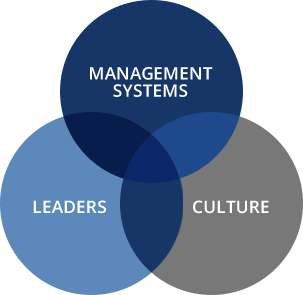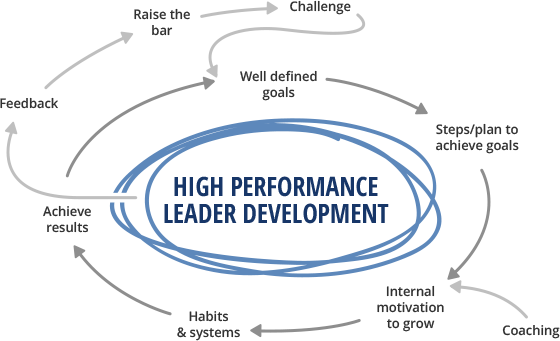

Transformational leaders are a critical component to engaging and motivating our teams. Through deliberate practice, we work on the leadership skill development of leaders and create alignment between these skills, the management system, and your organization’s culture.
Experience has taught us that over 95% of organizations fail to sustain a high performance culture over the long term (7 to 10 years). Success depends on strong and committed leaders, an effective management system structure, and a whole person focused culture based on respect and trust.
Creating an alignment of high performance leadership depends on all three of the elements working together to achieve this. We teach leaders the skills to develop themselves, to build effective management systems and to build the organization's culture.
HPL continually develops leaders, management system and culture models through its collaboration with HPS Consortiums. The HPSC develops best practice models through the implementation of the thinking by its consortium member partners. Over 25 years of experimentation, benchmarking and best practice development have resulted in organizations and models that are some of the best in the world.

HOW WE THINK


Becoming an effective leader requires a high level of focused practice. Leaders are pushed out of their comfort zone by having well defined leadership skill development goals.
Leaders are provided constant and specific feedback on where they need to improve their practice from both HPL's expert leaders and their peers in the best practice community. Practice and techniques are based on proven leadership techniques developed by HPL and HPSC; we know where leaders need to go and how they can get there.
As the leader improves, so does their confidence and internal motivation. Consistent feedback and implementing systems to support actions result in the formation of leadership habits. Once habits are formed, results are achieved and sustained.
HPL continues to work with the leader to raise the bar on performance, develop more challenging goals and repeat the cycle. As the leader grows, the leadership development cycle becomes engrained in the leader and then becomes self-sufficient.
VALUE ADDED

One on One Coaching and Mentoring – Engage with an expert leader for specific leadership development requirements including support to overcome challenging situations.
Grow your professional network and stay connected with like-minded leaders by following HPL on LinkedIn